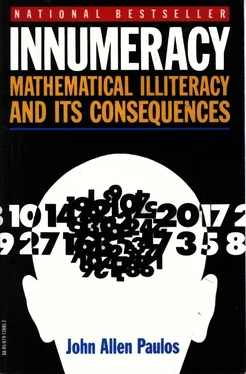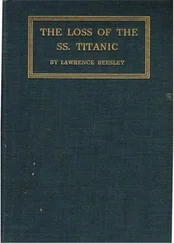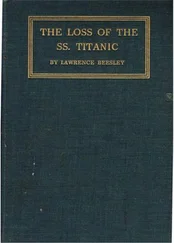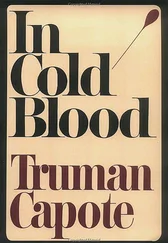An important bit of background intimately connected to the multiplication principle and combinatorial coefficients is the binomial probability distribution. It arises whenever a procedure or trial may result in "success" or "failure" and one is interested in the probability of obtaining R successes in N trials. If 20 percent of all sodas dispensed by a vending machine overflow their cups, what is the probability that exactly three of the next ten will overflow? at most, three? If a family has five children, what is the probability that they will have exactly three girls? at least, three? If one-tenth of all people have a certain blood type, what is the probability that, of the next hundred people we randomly select, exactly eight will have the blood type in question? at most, eight?
Let me derive the answer to the questions about the vending machine, 20 percent of whose sodas overflow their cups. The probability that the first three sodas overflow and the next seven do not is, by the multiplication principle for probability, (.2) 3x (.8) 7. But there are many different ways for exactly three of the ten cups to overflow, each way having probability (.2) 3x (.8) 7. It may be that only the last three cups overflow, or only the fourth, fifth, and ninth cups, and so on. Thus, since there are altogether (10 x 9 x 8)/(3 x 2 x 1) = 120 ways for us to pick three out of the ten cups (combinatorial coefficient), the probability of some collection of exactly three cups overflowing is 120 x (.2) 3x (.8) 7.
The probability of at most three cups overflowing is determined by finding the probability of exactly three cups overflowing, which we've done, and adding to it the probabilities of exactly two, one, and zero cups overflowing, which can be determined in a similar way. Happily, there are tables and good approximations which can be used to shorten these calculations.
Two final applications of the multiplication principle-one slightly depressing, the other somewhat cheering. The first is the probability of not being afflicted with any of a variety of diseases, accidents, or other misfortunes. Not being killed in a car accident may be 99 percent certain, while 98 percent of us may avoid perishing in a household accident. Our chances of escaping lung disease may be 95 percent; dementia, 90 percent; cancer, 80 percent; and heart disease, 75 percent. These figures are merely for illustration, but accurate estimates may be made for a wide range of dire possibilities. While the chances of avoiding any particular disease or accident may be encouraging, the probability of avoiding them all is not. If we multiply all the above probabilities (assuming these calamities are largely independent), the product grows disturbingly small quite quickly: already our chance of not suffering any of the few misfortunes listed above is less than 50 percent. It's a little anxiety-provoking, how this innocuous multiplication principle can make our mortality more vivid.
Now for better news of a kind of immortal persistence. First, take a deep breath. Assume Shakespeare's account is accurate and Julius Caesar gasped "You too, Brutus" before breathing his last. What are the chances you just inhaled a molecule which Caesar exhaled in his dying breath? The surprising answer is that, with probability better than 99 percent, you did just inhale such a molecule.
For those who don't believe me: I'm assuming that after more than two thousand years the exhaled molecules are uniformly spread about the world and the vast majority are still free in the atmosphere. Given these reasonably valid assumptions, the problem of determining the relevant probability is straightforward. If there are N molecules of air in the world and Caesar exhaled A of them, then the probability that any given molecule you inhale is from Caesar is A/N. The probability that any given molecule you inhale is not from Caesar is thus 1 -A/N. By the multiplication principle, if you inhale three molecules, the probability that none of these three is from Caesar is [1 – A/N] 3. Similarly, if you inhale B molecules, the probability that none of them is from Caesar is approximately [1 – A/N] B. Hence, the probability of the complementary event, of your inhaling at least one of his exhaled molecules, is 1 – [1 – A/N] B. A, B (each about 1/30th of a mole, or 2.2 x 10 22), and N (about 10 44molecules) are such that this probability is more than.99. It's intriguing that we're all, at least in this minimal sense, eventually part of one another.
2 Probability and Coincidence
It is no great wonder if, in the long process of time, while fortune takes her course hither and thither, numerous coincidences should spontaneously occur.
Plutarch
"You're a Capricorn, too. That's so exciting."
A man who travels a lot was concerned about the possibility of a bomb on board his plane. He determined the probability of this, found it to be low but not low enough for him, so now he always travels with a bomb in his suitcase. He reasons that the probability of two bombs being on board would be infinitesimal.
SOME BIRTHDAY VS. A PARTICULAR BIRTHDAY
Sigmund Freud once remarked that there was no such thing as a coincidence. Carl Jung talked about the mysteries of synchronicity. People in general prattle ceaselessly about ironies here and ironies there. Whether we call them coincidences, synchronicities, or ironies, however, these occurrences are much more common than most people realize.
Some representative examples: "Oh, my brother-in-law went to school there, too, and my friend's son cuts the principal's lawn, and my neighbor's daughter knows a girl who once was a cheerleader for the school." – "There've been five instances of the fish idea since this morning when she told me of her fears about his fishing on the open lake. Fish for lunch, the fish motif on Caroline's dress, the…" – Christopher Columbus discovered the New World in 1492 and his fellow Italian Enrico Fermi discovered the new world of the atom in 1942. – "You said you wanted to keep up with him, but later you said you wanted to keep abreast of her. It's clear what's on your mind." -The ratio of the height of the Sears Building in Chicago to the height of the Woolworth Building in New York is the same to four significant digits (1.816 vs. 1816) as the ratio of the mass of a proton to the mass of an electron. -The Reagan-Gorbachev INF treaty was signed on December 8, 1987, exactly seven years after John Lennon was killed.
A tendency to drastically underestimate the frequency of coincidences is a prime characteristic of innumerates, who generally accord great significance to correspondences of all sorts while attributing too little significance to quite conclusive but less flashy statistical evidence. If they anticipate someone else's thought, or have a dream that seems to come true, or read that, say, President Kennedy's secretary was named Lincoln while President Lincoln's secretary was named Kennedy, this is considered proof of some wondrous but mysterious harmony that somehow holds in their personal universe. Few experiences are more dispiriting to me than meeting someone who seems intelligent and open to the world but who immediately inquires about my zodiac sign and then begins to note characteristics of my personality consistent with that sign (whatever sign I give them).
The surprising likelihood of coincidence is illustrated by the following well-known result in probability. Since a year has 366 days (if you count February 29), there would have to be 367 people gathered together in order for us to be absolutely certain that at least two people in the group have the same birthday. Why?
Now, what if we were content to be just 50 percent certain of this? How many people would there have to be in a group in order for the probability to be half that at least two people in it have the same birthday? An initial guess might be 183, about half of 365. The surprising answer is that there need be only twenty-three. Stated differently, fully half of the time that twenty-three randomly selected people are gathered together, two or more of them will share a birthday.
Читать дальше












